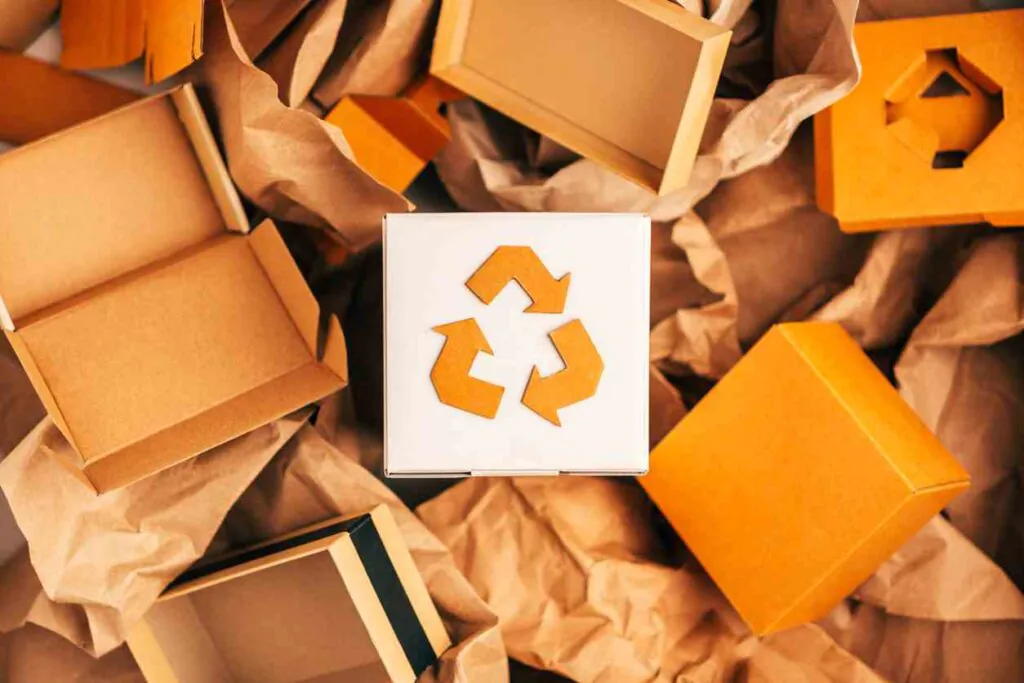In an era where sustainability and operational efficiency are increasingly interconnected, the packaging industry is evolving toward solutions that minimize waste and maximize value. Returnable packaging is a powerful response to these demands, offering companies a transformative approach that combines environmental responsibility with substantial business advantages. This article delves into the benefits of adopting returnable packaging, from improved transport efficiency and reduced storage needs to cost savings in waste management and labor. If you’re looking to align your operations with modern sustainability goals and gain a competitive edge, this read is essential.
Understanding the Value of Returnable Packaging

Returnable packaging is engineered for durability, efficiency, and cost-effectiveness, designed with features like easy cleaning, repair options, and collapsible formats for seamless returns. While its applications span various sectors, this analysis will focus on its pivotal role in transport and industrial settings, where reusability offers notable advantages.
As competition grows and environmental concerns intensify, companies leveraging reusable packaging can significantly enhance their brand reputation while gaining operational efficiencies. Embracing these sustainable practices is no longer just a trend; it’s a strategic imperative that aligns economic performance with environmental stewardship. Transitioning to reusable packaging now offers a clear path to reduce costs, optimize supply chain operations, and demonstrate a commitment to sustainability—benefiting both business performance and the planet.
Returnable Packaging: 5 Strategic Reasons to Make the Transition
5 Key Benefits of Returnable Packaging
- Increased transport efficiency
- Limited storage space
- Environmental benefits
- Lower waste management costs
- Reduced labor costs
Increased Efficiency in Transport
Reusable packaging significantly enhances efficiency in transport and logistics by leveraging its durability and design. Unlike traditional single-use packaging, reusable containers are constructed from robust materials that withstand challenging conditions, such as moisture and heat, which minimizes product damage during transit.
Key Benefits:
- Durability and Protection: Reusable packaging is designed for multiple uses, offering superior protection against damage and reducing associated costs. This durability ensures that products remain intact throughout their journey.
- Space Optimization: Many reusable designs maximize space utilization, allowing for the transportation of larger quantities in fewer trips. This efficiency not only cuts transportation costs but also reduces the carbon footprint by minimizing the number of shipments required.
- Standardization: The uniformity of reusable containers facilitates better load planning and stacking, resulting in fuller trucks and fewer partially empty shipments. This standardization streamlines warehousing processes, simplifying storage and retrieval.
Adopting reusable packaging solutions leads to significant cost savings, reduced environmental impact, and improved operational efficiency in logistics.
Limited Storage Space Requirement
Adopting reusable packaging can transform a company’s warehouse management strategy by significantly reducing storage space requirements. Unlike single-use packaging, which demands extensive storage for large quantities, reusable packaging operates on a streamlined model that maintains just enough materials in circulation.
Key Benefits:
- Space Optimization: By minimizing the volume of packaging materials stored on-site, companies can optimize their warehouse layout, enhancing overall efficiency and freeing up space for critical operations or inventory.
- Cost Savings: This reduction in storage needs can lead to lower warehouse rental or ownership costs, allowing businesses to allocate resources to revenue-generating activities.
- Reduced Risk of Obsolescence: With less packaging on hand, companies mitigate the risk of obsolescence due to design changes or product modifications.
- Compact Storage Features: Many reusable packaging solutions are collapsible or nestable when empty, facilitating compact storage and efficient return transport, further minimizing space requirements.
Implementing reusable packaging not only streamlines warehouse operations but also contributes to cost savings and improved efficiency.
Environmental Implications
The adoption of reusable packaging presents significant environmental benefits, making it a strategic choice for companies aiming to reduce their ecological footprint.
Key Benefits:
- Reduced Resource Consumption: Reusable packaging minimizes the demand for new materials, leading to lower consumption of plastics, paper, and metals. This results in decreased energy usage during manufacturing and a reduction in greenhouse gas emissions associated with production.
- Waste Reduction: By keeping packaging in circulation, companies can significantly decrease the volume of materials entering landfills. This not only conserves landfill space but also mitigates the environmental hazards linked to packaging decomposition.
- Longevity and Recyclability: Reusable packaging typically has a longer lifespan than single-use options. When it reaches the end of its useful life, many reusable containers are made from recyclable materials, further minimizing their environmental impact.
- Lower Carbon Footprint: The efficiency gains in transport associated with reusable packaging contribute to a reduced carbon footprint. Fewer trips and optimized loading lead to less fuel consumption and lower emissions from transportation activities.
By embracing reusable packaging, companies can demonstrate their commitment to sustainability, appealing to environmentally conscious consumers while potentially gaining a competitive advantage in the market.
Lower Waste Management Costs
Waste management is a hidden yet impactful cost in packaging decisions, and returnable packaging offers a cost-effective solution. Unlike single-use packaging that quickly becomes waste, reusable packaging reduces the need for frequent disposal, cutting costs in waste collection, sorting, transportation, and regulatory fees.
Key Benefits:
- Cost Reduction: Returnable packaging minimizes waste, leading to lower expenses in collection, sorting, and disposal.
- Regulatory Savings: Decreased waste volumes can reduce regulatory fees associated with waste management.
- Infrastructure Efficiency: Companies save on infrastructure and labor costs by reducing the frequency of waste disposal.
- Revenue Opportunities: Potential to earn income from recyclable materials enhances overall profitability.
- Enhanced Brand Image: Demonstrating commitment to sustainability improves public perception and customer loyalty.
- Competitive Edge: Sustainable practices can provide a significant advantage in today’s eco-conscious market.
Cut Down Labor Costs
Switching to returnable packaging can significantly lower labor costs in packaging operations due to several key advantages:
Key Benefits:
- Ease of Use: Returnable packaging is designed for quick handling, reducing the time needed for packaging tasks. This simplicity minimizes training requirements and decreases the likelihood of errors, leading to a more efficient workforce.
- Ergonomic Design: Many reusable packaging solutions feature ergonomic designs that enhance lifting and stacking, which can improve warehouse efficiency and reduce workplace injuries. This not only boosts employee productivity but may also lower insurance costs associated with workplace accidents.
- Standardization: The consistent sizes and shapes of returnable packaging streamline inventory management and loading processes. This standardization facilitates faster training for new employees and opens opportunities for increased automation in packaging tasks.
- Durability: The robust nature of reusable packaging reduces the frequency of breakage and product damage, minimizing labor associated with handling these issues. This reliability contributes to overall operational efficiency.
Adopting returnable packaging can lead to substantial reductions in labor costs by enhancing efficiency, safety, and training processes within packaging operations.
Unlock the potential of your operations by transitioning to returnable packaging today—where sustainability meets efficiency. Don’t just keep up with industry standards; set them and watch your business thrive while making a positive impact on the planet! To get started,
The Lifecycle of Returnable Packaging: A Sustainable Approach to Resource Management
Returnable Packaging Lifecycle
Step 1
Manufacturing
Returnable packaging is produced using durable materials like robust plastics, metal, or reinforced cardboard. Designed for longevity, ease of cleaning, and multiple uses. Often incorporates features like collapsibility or nest ability for efficient return transport.
Step 2
Distribution
Packaging is sent to the product manufacturer or distribution center. It's filled with products and prepared for shipment. The filled packaging is then transported to retailers, wholesalers, or end-users.
Step 3
Use
The packaging arrives at its destination with the product inside. Products are removed and used by the end consumer or business. Empty packaging is set aside for return.
Step 4
Collection
Empty packaging is gathered at collection points. This might be at retail locations, distribution centers, or dedicated collection facilities. Consolidated for efficient return transport.
Step 5
Cleaning/Inspection
Returned packaging undergoes thorough cleaning to remove any residues or contaminants. Each item is inspected for damage or wear. Minor repairs may be performed if needed. Packaging that doesn't meet quality standards is removed from circulation and recycled.
Step 6
Reuse
Clean, inspected packaging is returned to the distribution center or manufacturer. It's now ready to be refilled with products and start the cycle again.
This cycle repeats multiple times, with each piece of packaging being reused many times before eventually being recycled at the end of its useful life. The circular nature of this process emphasizes the sustainability and efficiency of returnable packaging systems.
Conclusion
Returnable packaging is more than a trend—it’s a strategic shift offering multiple benefits across industries. From transport efficiency and storage optimization to environmental impact, waste reduction, and labor savings, reusable packaging aligns business efficiency with sustainability. In today’s competitive, eco-conscious landscape, adopting returnable packaging is a powerful move to cut costs, elevate green credentials, and enhance supply chain performance.
With advanced materials and adaptable designs, returnable packaging solutions are now more accessible than ever. The question is no longer if you can afford to switch, but if you can afford not to.


